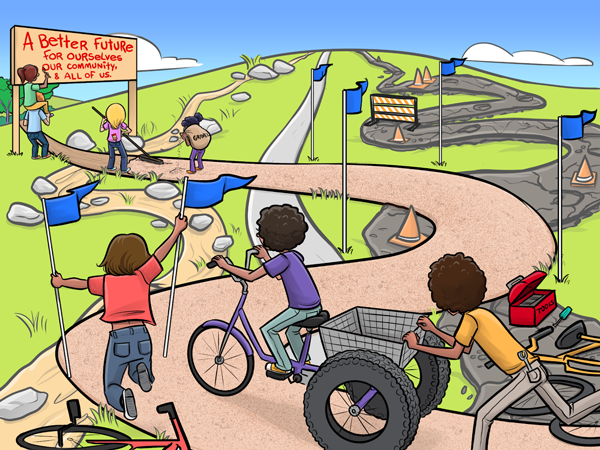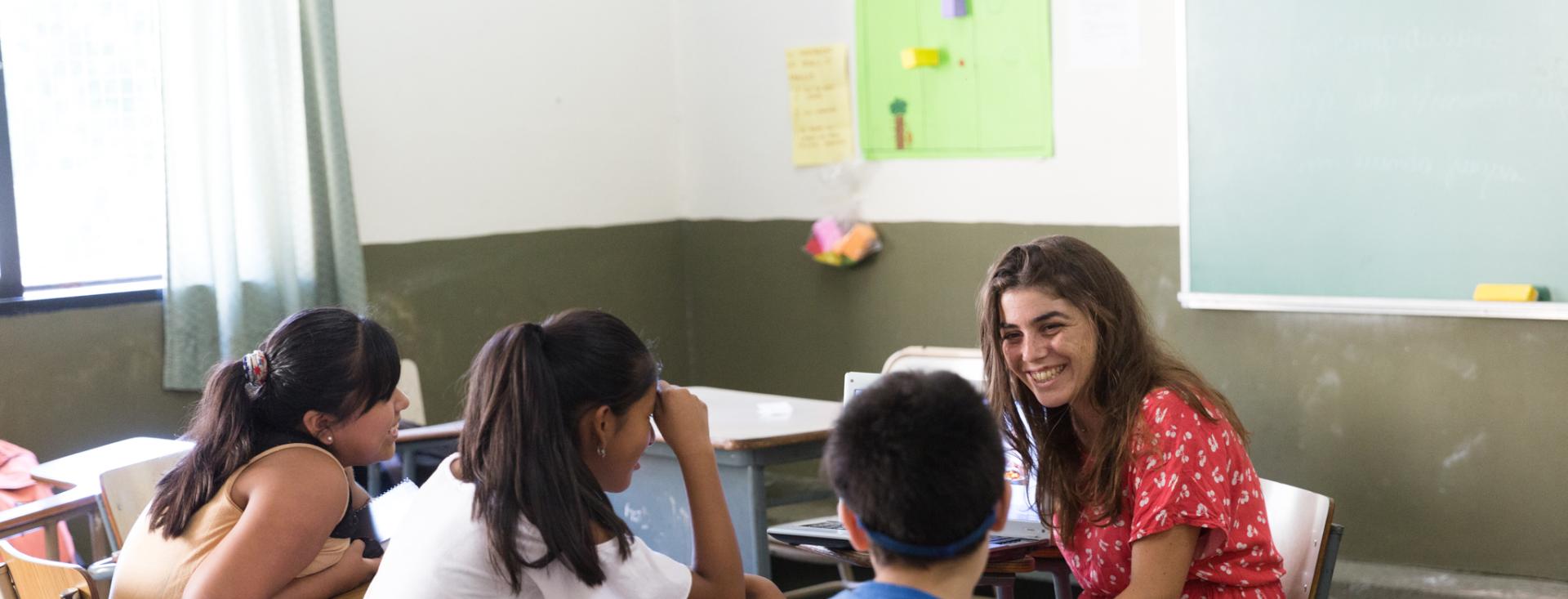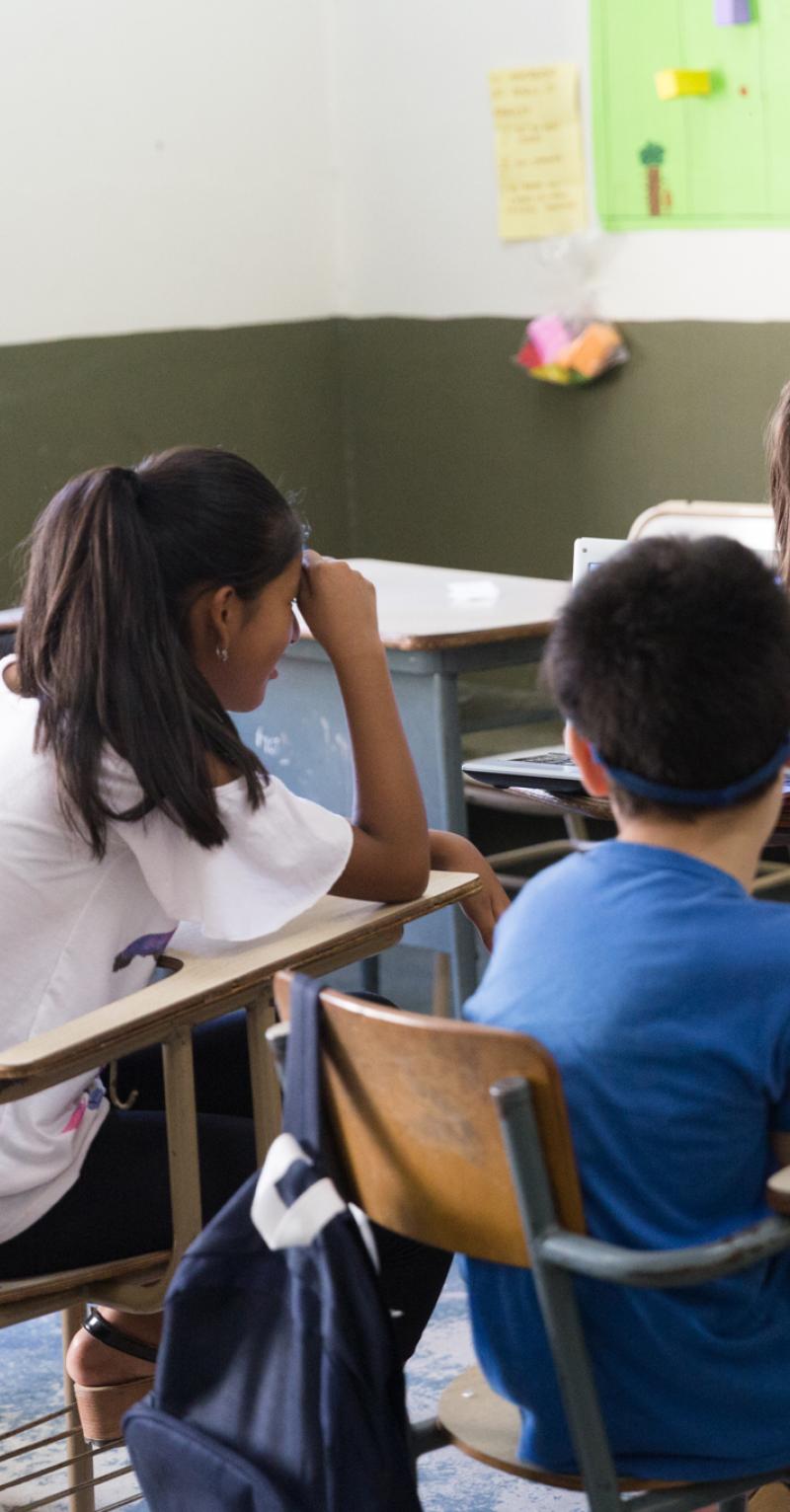The call for reorienting education toward student leadership
At the heart of Teaching As Collective Leadership is a call for a different approach to education, one that puts growing student leadership at its core. This goes beyond a desire to improve existing systems, to a conviction that we need to fundamentally reimagine our schools. Perfecting industrial-era ways of teaching and learning will not lead to an equitable, just, and sustainable future for this planet.
Across and beyond Teach For All’s global network, we hear powerful, impassioned students, educators, families, and community leaders calling for a re-examining of the purpose of education. Amidst all their diversity, these voices are unified in their urgent concern that today too many children experience schools that are...
...designed to achieve narrowly defined academic goals, sometimes at the cost of other important student leadership outcomes
...built for a past industrial age that values compliant efficiency over creative and collaborative critical thinking and problem-solving
...dismissive of the critical importance of community values and cultural identities to helping students realize their potential
...uninformed by a revolution in the science of learning and development
The same global vantage point that is revealing this disturbing reality is also offering profound hope. We are finding an untapped reservoir of wisdom among teachers who are growing their students as leaders of a better future, for themselves, for their communities, and ultimately for all of us. There are profound patterns in their experiences to learn from and our collective studies of transformational classrooms are an evolving attempt to understand these patterns.
There is no single, simple answer to how to transform our schools. We will need to learn and support each other as we go. We hope Teaching As Collective Leadership can help spark conversations, inspire action, and support your efforts to be part of this process of change.
Exploring different images of equity
Many education systems around the world aim to address inequity—and yet, the term “equity” is defined in many different ways. Take a few minutes to examine and reflect on the drawings below, each of which is an attempt to metaphorically capture different paradigms of education equity.

Equity as equal inputs

Equity as equal outcomes

Equity as student leadership
- What do you notice is similar and different about each drawing?
- What do the differences represent?
- Which picture best represents what you experienced as a student at school?
- Which picture best represents what you want for children in your community?
- What would need to change to make this a reality?
Explore these questions in a more interactive way.
Teaching As Collective Leadership is an attempt to bring together the collective wisdom of those who are working towards a vision of equity as student leadership. The insights in this framework are emerging from collective studies of transformational classrooms around the world.
Our Glossary
In our attempt to capture the real spirit of the classrooms we have studied, we have sometimes intentionally used words and phrases in a slightly unusual way.
We invite you to learn more about our language choices by exploring our Glossary.

